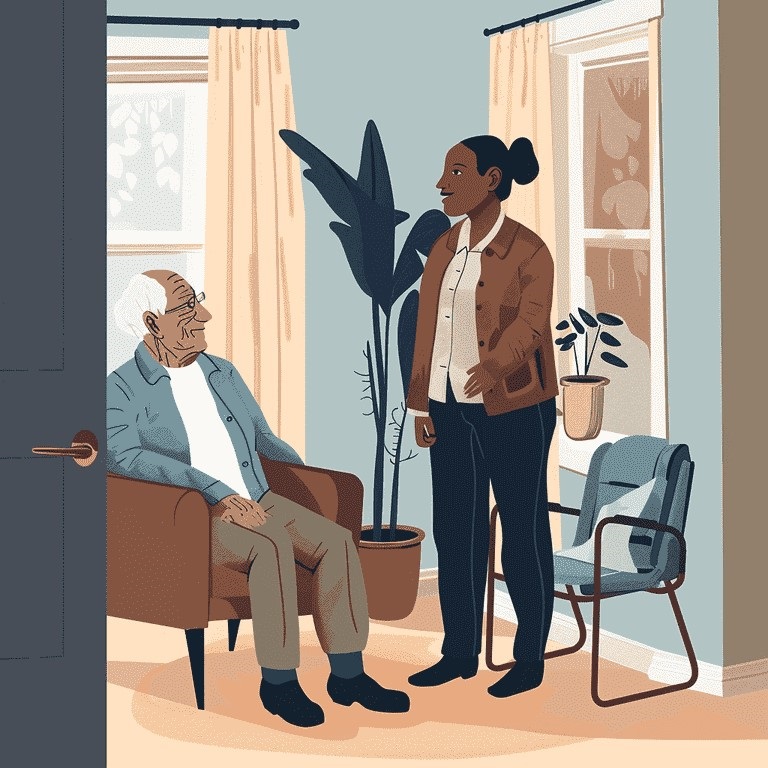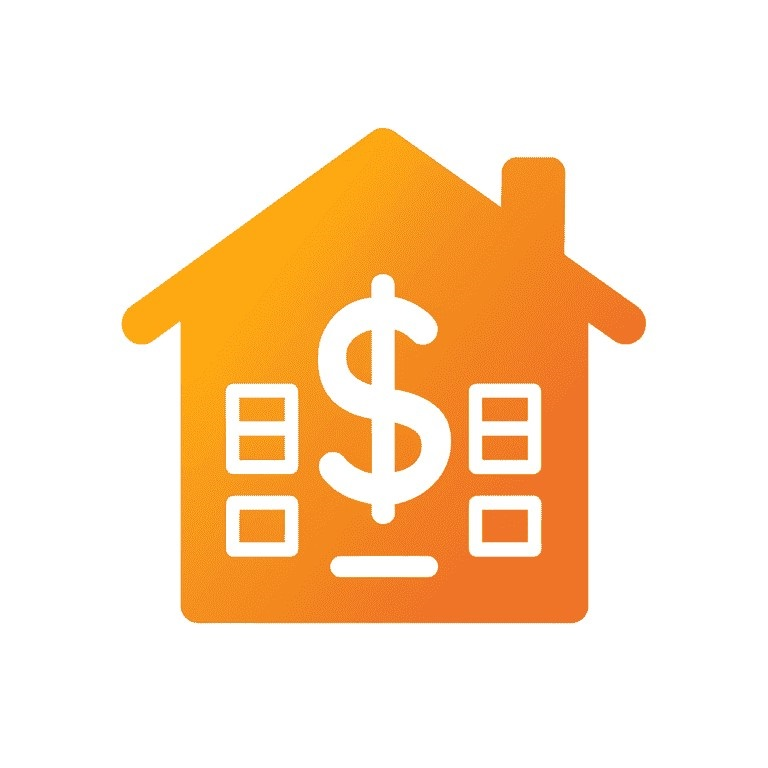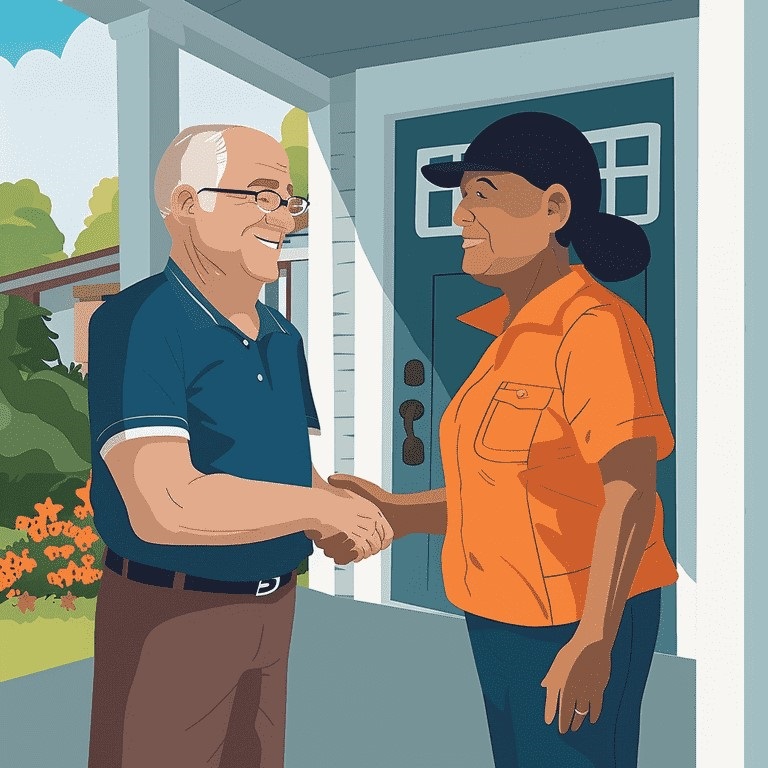How Much Does the VA Pay for In-Home Care? A Comprehensive Guide


If you are an elderly veteran or a caregiver, you need to understand the VA benefits for in-home care.
The VA provides many services and money to help veterans.
The goal is to help them keep their independence and get care at home. This guide will explore the types of in-home care services covered by the VA. It will cover eligibility, payment, and more.

VA Health Care Benefits and Eligibility
The VA operates a healthcare system.
It provides many services to eligible veterans. Veterans must meet specific criteria to get VA health care benefits. The criteria can include:
- Having a service-connected disability
- Meeting income thresholds
- Other qualifying factors, such as being a former prisoner of war or receiving a Purple Heart
Types of In-Home Care Services Covered by the VA
The VA covers several in-home care services. They help veterans keep their health and freedom. These services include:
Skilled Home Health Care
Skilled home health care involves medical treatment and rehab services. Licensed healthcare pros, such as nurses, provide them. Physical therapists and occupational therapists also provide them. Veterans could get skilled home health care. They qualify if they have a medical condition needing ongoing treatment or rehabilitation.
Covered services and treatments can include:
- Wound care
- Medication management
- Physical, occupational, and speech therapy
- Medical social services
Homemaker and Home Health Aide Services
Homemaker and home health aide services help with daily living. They also help with household tasks. The services are for helping veterans keep their independence. They also stop the need for institutional care.
Covered tasks and activities can include:
- Meal preparation
- Personal care (bathing, dressing, grooming)
- Medication reminders
Veterans can get homemaker and home health aide services. They can get them if they have a medical condition. The condition must limit their ability to do these tasks on their own.
Respite Care
Respite care provides temporary relief for main caregivers. It lets them take a break from their caregiving duties. The VA offers many respite care programs. These options include in-home respite and adult day health care. They also include short stays in nursing homes or assisted living.
To be eligible for respite care, veterans must meet specific criteria. For example, they must have a long-term medical condition or disability. This condition requires ongoing care.
Adult Day Health Care
Adult day health care centers provide a structured, supervised environment. They are for veterans who need help with daily living or medical care. These centers offer a variety of services, including:
- Social and recreational activities
- Meals and snacks
- Medical care and medication management
- Physical, occupational, and speech therapy
Veterans must have a medical condition or disability. They need it to qualify for adult day health care. It must require ongoing care and supervision.

VA Payment Methods for In- Home Care
The VA offers several payment methods for in-home care. The methods depend on the veteran’s eligibility and the needed care type.
Veterans Health Administration (VHA) Payment
The VHA can pay VA-approved home care agencies. They receive payment for providing services to eligible veterans. To get VHA payment, veterans must be in the VA health care system. They must need in-home care services.
The application process involves:
- Obtaining a referral from a VA primary care provider
- Completing a home care assessment to determine the specific services needed
- Selecting a VA-approved home care agency
Veterans may have to pay copayments or out-of-pocket expenses. This depends on their service-connected disability and income.
Veterans Affairs Pension with Aid and Attendance Benefit
The VA Pension is tax-free. It gives money to low-income veterans. They must have served during wartime. Veterans need help with daily activities. They could get an extra Aid and Attendance allowance.
Eligibility requirements for the VA Pension with Aid and Attendance include:
- Being age 65 or older or permanently and disabled
- Having limited income and assets
- They need help with daily activities. They may be bedridden or in a nursing home. Or, they have severe vision loss.
The highest pension rates change based on the vet’s marital status, number of dependents, and care level.
Program of Comprehensive Help for Family Caregivers (PCAFC)
The PCAFC provides support services and money to family caregivers of eligible veterans. Veterans sustained injuries in the line of duty on or after September 11, 2001. Eligible caregivers can receive:
- Monthly stipend payments
- Health insurance coverage
- Respite care
- Caregiver training and education
Veterans must have a service-connected disability rating of 70% or higher. They must also need ongoing care and supervision to be eligible for the PCAFC.

Factors Affecting VA Payment Amounts for In-Home Care
Many factors can impact the VA payment for in-home care.Veteran’s service-connected disability rating
Veterans with higher disability ratings could get more coverage and higher payments. Combined disability ratings consider the total impact of many disabilities. They can also affect benefits.Veteran’s income and assets
Some VA programs are means-tested. They have income and asset limits. An example is the VA Pension with Aid and Attendance. Yet, some assets, like a main home or vehicle, could be exempt.Geographical location and cost of living adjustments
VA payment rates for in-home care services can vary. The benefits depend on the veteran’s location and the local cost of living. Some benefits, like the VA Pension, include cost of living adjustments. They account for these differences.How to Apply for VA In-Home Care Benefits
To apply for VA in-home care benefits, veterans or their caregivers must gather the required documents and information. These can include:- Proof of military service and discharge (DD Form 214)
- Medical records and care needs assessment
- Financial documentation (income and asset statements)

Alternative and Supplementary Funding Options
Besides VA benefits, veterans can explore other ways to fund in-home care, like:
Long-term care insurance
It can help cover the costs of in-home care. The VA benefits don’t fully cover these costs. Veterans could integrate their insurance coverage with VA benefits to maximize their coverage.
Medicaid and state-specific programs
Low-income veterans could get Medicaid long-term care help. It can cover in-home care costs. Some states also offer special programs for elderly veterans. These can provide extra support.
Charitable organizations and grants
Several non-profit organizations offer support and financial help to veterans needing in-home care. These organizations can provide grants. They can also offer scholarships or other aid to help cover care costs.

Frequently Asked Questions (FAQ)
Q: Can veterans receive both skilled home health care and homemaker/home health aide services simultaneously?
A: Veterans could be eligible to receive both types of services concurrently if they satisfy the eligibility criteria for each service and have a demonstrated medical need.
Q: How often can veterans receive respite care services?
A: The frequency and duration of respite care services depend on the specific program and the veteran’s needs. Some programs can offer respite care hourly, daily, or weekly, while others can limit the total number of respite care days available per year.
Q: Can veterans choose their home care agency when receiving services through the Veterans Health Administration (VHA)?
A: Veterans must choose from a list of VA-approved home care agencies when receiving services through the VHA. The VA maintains a network of approved providers to ensure quality care and compliance with VA standards.
Q: How do veterans determine eligibility for the Veterans Affairs Pension with Aid and Attendance Benefit?
A: To determine eligibility, veterans should complete an application for the VA Pension and submit it along with supporting documentation, such as medical records and financial information. The VA will review the application and notify the veteran of their eligibility status.
Q: Can family members other than spouses serve as caregivers under the Program of Comprehensive Assistance for Family Caregivers (PCAFC)?
A: Yes, in addition to spouses, other family members, such as adult children, siblings, or parents, could be eligible to serve as caregivers under the PCAFC if they satisfy the program’s requirements and the veteran’s care needs.
Q: How can veterans appeal a denied claim for VA in-home care benefits?
A: To appeal a denied claim, veterans must file a Notice of Disagreement (NOD) with the VA within one year of the date on the denial letter. The NOD should specify the reasons for disagreement and include any supporting evidence. The VA will then review the appeal and issue a decision.
Q: Can veterans simultaneously receive VA in-home care benefits and Medicaid long-term care assistance?
A: In some cases, veterans could be eligible to receive both VA in-home care benefits and Medicaid long-term care assistance. However, the specific rules and regulations regarding the coordination of these benefits vary by state and can be subject to income and asset limitations.
Q: Are there any age restrictions for veterans to receive in-home care services through the VA?
A: No specific age restrictions exist for receiving in-home care services through the VA. However, some programs, such as the VA Pension with Aid and Attendance Benefit, have age requirements as their eligibility criteria.
Q: Can veterans receive in-home care services for non-service-connected conditions?
A: Veterans could be eligible to receive in-home care services for non-service-connected conditions if they satisfy other eligibility criteria, such as income limits or medical necessity requirements.
Q: How can veterans learn about local charitable organizations or grants that assist with in-home care costs?
A: Veterans can contact their local VA social worker, Veteran Service Organizations (VSOs), or Area Agency on Aging for information about local charitable organizations and grants that can assist with in-home care costs. Online resources, such as the National Resource Directory, can also help veterans identify potential sources of support.

Conclusion
Knowing how much the VA pays for in-home care is critical. It’s important for elderly veterans and their caregivers. They can explore the services, payment methods, and eligibility criteria. This way, they can make informed decisions about their care. They can access the support they need to keep their independence and quality of life.
Every veteran’s situation is unique. The available VA benefits can vary based on their disability rating, income, and location. Veterans and their caregivers should research all options. They should seek help from VA representatives, veteran organizations, and other resources.
With enough support and resources, elderly veterans can get the in-home care they need. It will let them age with dignity and comfort at home.
